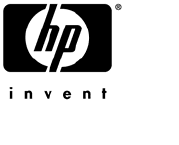Broadcom BRCM1028 802.11g Wireless LAN PCI-E Mini Card User Manual 431182 001
Broadcom Corporation 802.11g Wireless LAN PCI-E Mini Card 431182 001
Broadcom >
Contents
User Manual 2

Quick Reference
HP Entertainment PC
For more information about your computer, select Start >
Help and Support > User Guides.
© Copyright 2007 Hewlett-Packard Development Company, L.P.
Microsoft and Windows are U.S. registered trademarks of Microsoft
Corporation.
The information contained herein is subject to change without notice. The
only warranties for HP products and services are set forth in the express
warranty statements accompanying such products and services. Nothing
herein should be construed as constituting an additional warranty. HP shall
not be liable for technical or editorial errors or omissions contained herein.
Quick Reference
HP Notebook PC
First Edition: January 2007
Document Part Number: 431182-001

Quick Reference v
Contents
1 Finding Information
Finding the Help and Support Center (Start > Help and
Support) . . . . . . . . . . . . . . . . . . . . . . . . . . . . . . . . . . . . . 1–1
Finding the user guides (Start > Help and Support > User
Guides) . . . . . . . . . . . . . . . . . . . . . . . . . . . . . . . . . . . . . . 1–1
Identifying installed software and hardware . . . . . . . . . . 1–2
2 Next steps
Creating recovery discs . . . . . . . . . . . . . . . . . . . . . . . . . . 2–1
Protecting the computer . . . . . . . . . . . . . . . . . . . . . . . . . . 2–1
Protecting the computer from viruses . . . . . . . . . . . . 2–1
Protecting your system files . . . . . . . . . . . . . . . . . . . 2–2
Protecting your privacy . . . . . . . . . . . . . . . . . . . . . . . 2–2
Protecting the computer from power surges . . . . . . . 2–3
Using the computer safely . . . . . . . . . . . . . . . . . . . . . 2–3
Connecting to the Internet . . . . . . . . . . . . . . . . . . . . . . . . 2–4
Choosing the type of Internet access available . . . . . 2–5
Choosing an ISP . . . . . . . . . . . . . . . . . . . . . . . . . . . . 2–5
Installing additional software and hardware . . . . . . . . . . 2–7
Updating the software installed on the computer. . . . . . . 2–8
Turning off the computer correctly . . . . . . . . . . . . . . . . . 2–8
3 Troubleshooting
Troubleshooting resources . . . . . . . . . . . . . . . . . . . . . . . . 3–1
Quick troubleshooting . . . . . . . . . . . . . . . . . . . . . . . . . . . 3–1
The computer is unable to start up. . . . . . . . . . . . . . . 3–1

vi Quick Reference
Contents
The computer screen is blank . . . . . . . . . . . . . . . . . . 3–2
Software is functioning abnormally . . . . . . . . . . . . . 3–3
The computer is turned on but not responding . . . . . 3–4
The computer is unusually warm. . . . . . . . . . . . . . . . 3–4
An external device is not working. . . . . . . . . . . . . . . 3–5
The home wireless network connection is not working . .
3–5
Contacting Customer Care . . . . . . . . . . . . . . . . . . . . . . . . 3–6
4 Software backup and recovery
Backing up your information . . . . . . . . . . . . . . . . . . . . . . 4–2
When to back up . . . . . . . . . . . . . . . . . . . . . . . . . . . . 4–2
Back up suggestions . . . . . . . . . . . . . . . . . . . . . . . . . 4–2
Using system restore points . . . . . . . . . . . . . . . . . . . . . . . 4–3
When to create restore points . . . . . . . . . . . . . . . . . . 4–3
Create a system restore point. . . . . . . . . . . . . . . . . . . 4–3
Restore to a previous date and time. . . . . . . . . . . . . . 4–4
Creating recovery discs . . . . . . . . . . . . . . . . . . . . . . . . . . 4–4
Reinstalling software programs and drivers. . . . . . . . . . . 4–5
Reinstalling preinstalled programs or drivers . . . . . . 4–6
Reinstalling programs from discs . . . . . . . . . . . . . . . 4–6
Performing a recovery . . . . . . . . . . . . . . . . . . . . . . . . . . . 4–7
Recovering from the recovery discs . . . . . . . . . . . . . 4–7
Recovering from the partition on the hard drive . . . . 4–7
Deleting the recovery partition on the hard drive . . . . . . 4–8
Updating reinstalled software . . . . . . . . . . . . . . . . . . . . . 4–9
A Using the optical drive
Inserting an optical disc . . . . . . . . . . . . . . . . . . . . . . . . . . A–1
Removing an optical disc (with power) . . . . . . . . . . . . . . A–2
Removing an optical disc (without power) . . . . . . . . . . . A–2
B Specifications
Operating environment. . . . . . . . . . . . . . . . . . . . . . . . . . . B–1

Contents
Quick Reference vii
Rated input power . . . . . . . . . . . . . . . . . . . . . . . . . . . . . . B–2
Expansion port 3 input/output signals (select models only) . .
B–3
C Routine Care
Cleaning the display. . . . . . . . . . . . . . . . . . . . . . . . . . . . . C–1
Cleaning the TouchPad and keyboard . . . . . . . . . . . . . . . C–1
Traveling and shipping. . . . . . . . . . . . . . . . . . . . . . . . . . . C–2
Index

viii Quick Reference
Contents

Quick Reference 1–1
1
Finding Information
Finding the Help and Support Center
(Start > Help and Support)
You can access the Help and Support Center by selecting Start >
Help and Support. In addition to providing information about
the operating system, the Help and Support Center covers these
topics:
■Your computer, such as model and serial number, installed
software, hardware components, and specifications.
■How to help safeguard your computer.
■How to get the best performance from the battery.
■How to set up a wireless network.
■Links to community forums of IT experts.
Finding the user guides (Start > Help
and Support > User Guides)
User guides, regulatory and safety notices, and other information
resources about using the computer are available through the
Help and Support Center.
To access the user guides:
»Select Start > Help and Support > User Guides.

1–2 Quick Reference
Finding Information
Identifying installed software and
hardware
The computer includes software that is preinstalled on the hard
drive. To see a list of the software:
1. Select Start > All Programs.
2. Double-click the program you want to open.
✎For details about using software included with the computer,
refer to the software manufacturer’s instructions, which may be
provided on disc, as online Help files, or on the manufacturer’s
Web site.
To see a list of hardware installed on the computer:
1. Select Start > Computer.
2. Click the Properties tab and, in the left pane, click Device
Manager.
3. In the User Account Control dialog box, click Continue.
✎You can modify your device configurations using Device
Manager.

Quick Reference 2–1
2
Next steps
Creating recovery discs
After setting up the computer for the first time, it is recommended
that you create a set of recovery discs of the full factory image.
The recovery discs are used to start up (boot) the computer and
recover the operating system and software to factory settings in
case of system failure or instability.
For information on how to create a set of recovery discs, refer to
Chapter 4, “Creating recovery discs.”
Protecting the computer
The information in this section is designed to protect your
computer from damage caused by a virus, a security breach, a
power surge, unsafe operation, or system failure.
Protecting the computer from viruses
When you use the computer for e-mail, network, or Internet
access, you expose it to computer viruses that can disable the
operating system, applications, or utilities or cause them to
function abnormally.
Antivirus software can detect most viruses, destroy them, and
in most cases repair damage they have caused. To provide
ongoing protection against newly discovered viruses, antivirus
software must be kept up to date.

2–2 Quick Reference
Next steps
Norton Internet Security is preinstalled on the computer:
■Your version of Norton Internet Security includes 60 days of
free updates. It is strongly recommended that you protect the
computer against new viruses beyond 60 days by purchasing
extended update service.
■For information about using and updating Norton Internet
Security and for purchasing extended update service, select
Start > All Programs > Norton Internet Security > Help
and Support.
■To access Norton Internet Security, select Start > All
Programs > Norton Internet Security.
Protecting your system files
The operating system and PC Recovery software provide several
ways to back up the system and to recover optimal system
functionality. For additional information, refer to Chapter 4,
“Software backup and recovery.”
Protecting your privacy
When you use the computer for e-mail, network, or Internet
access, it is possible for unauthorized persons to obtain
information about you or your computer.
To optimize the privacy protection features:
■Keep the operating system and software updated. Many
software applications contain security enhancements.
■Use a firewall. A firewall is software that monitors incoming
traffic on the computer. Some firewalls also monitor outgoing
traffic.

Next steps
Quick Reference 2–3
Protecting the computer from power surges
To protect the computer from the power surges that may be
caused by an uncertain power supply or an electrical storm,
observe these practices:
■Plug the computer power cord into an optional, high-quality
surge protector. Surge protectors are available from most
computer or electronics retailers.
■During an electrical storm, either run the computer on battery
power or shut down the computer and unplug the power cord.
■If applicable to your location, provide surge protection on the
modem cable that connects the modem to a telephone line.
Telephone line surge protectors are available from computer
or electronics retailers in some regions.
Using the computer safely
ÅWARNING: To reduce the risk of electric shock or damage to your
equipment:
■Plug the power cord into an AC outlet that is easily accessible at all
times.
■Disconnect power from the computer by unplugging the power cord
from the AC outlet (not by unplugging the power cord from the
computer).
■If provided with a 3-pin attachment plug on your power cord, plug
the cord into a grounded (earthed) 3-pin outlet. Do not disable the
power cord grounding pin, for example, by attaching a 2-pin
adapter. The grounding pin is an important safely feature.
ÅWARNING: To reduce the risk of serious injury, read the Safety and
Comfort Guide. It describes proper workstation setup and proper posture,
health, and work habits for computer users. The Safety and Comfort Guide
also provides important electrical and mechanical safety information. This
guide is available on the Web at http://www.hp.com/ergo and in the Help
and Support Center. To access the Help and Support Center, select
Start > Help and Support > User Guides, or refer to a User Guides
disc included with some models.

2–4 Quick Reference
Next steps
ÅWARNING: To avoid potential discomfort or burns, do not block the air
vents or place the computer on your lap for extended periods. Also, do not
allow the AC adapter to contact the skin for extended periods during
operation. The computer is designed to run demanding applications
at full power. As a result of increased power consumption, it is normal for
the computer and the AC adapter to feel warm or hot when used
continuously. The computer and the AC adapter comply with the
user-accessible surface temperature limits defined by the International
Standard for Safety of Information Technology Equipment (IEC 60950).
ÅWARNING: To reduce potential safety issues, use only the AC adapter or
battery provided with the computer, a replacement AC adapter or battery
provided by HP, or a compatible AC adapter or battery purchased as an
accessory from HP.
For more safety and regulatory information, and for battery
disposal information, refer to the Regulatory, Safety and
Environmental Notices located in the Help and Support Center.
To access the Help and Support Center, select Start > Help and
Support > User Guides.
Connecting to the Internet
Your computer includes hardware and software that allows you
to connect to the Internet. The following sections of this guide
give more information about these tasks:
■Choosing the type of Internet connection you want, such as
broadband, wireless, or dial-up, and connect the hardware.
■Choosing an Internet service provider (ISP).
✎Internet hardware and software features vary depending on
computer model and your location.

Next steps
Quick Reference 2–5
Choosing the type of Internet access
available
There are 3 basic types of Internet access:
■Broadband—High-speed Internet service providers include
the following types of connections:
❏Cable modem
❏Digital Subscriber Line (DSL)
❏Satellite
❏Other services
For broadband access, additional hardware and/or software
must be provided by your ISP.
■Wireless—For high-speed mobile Internet access, you can
use a wireless connection.
❏To learn about setting up wireless access, visit the HP
Network Assistant at http://www.hp.com/go/techcenter/wireless
(English only).
❏To access Wireless Home Network Setup and for
instructions on using this software, select Start > Help
and Support.
■Dial-up—You can access the Internet by dialing into a
service provider using a modem cable connected to the RJ-11
(modem) jack.
Choosing an ISP
You must set up Internet service before you can connect to the
Internet. The computer includes software features to help you set
up a new Internet account or configure the computer to use an
existing account:
■Easy Internet Sign-up (available in some locations)

2–6 Quick Reference
Next steps
■ISP-provided icons (available in some locations)
■Microsoft® Windows® New Connection Wizard (available
in all locations)
Using Easy Internet Sign-up
If the Easy Internet Sign-up utility is supported in the country in
which you purchased the computer, you can access the utility by
using either of the following methods:
■Double-click the Easy Internet Sign-up icon on the
Windows desktop.
– or –
■Select Start > All Programs > Online Services > Easy
Internet Sign-up.
The Easy Internet Sign-up provides these tasks:
■Signing up for a new Internet account
■Configuring the computer to use an existing account
Using ISP-provided icons
If ISP-provided icons are supported in the country in which you
purchased the computer, the icons may be displayed either
individually on the Windows desktop or grouped in a desktop
folder named Online Services.
To set up a new Internet account or configure the computer to use
an existing account:
»Double-click an icon, and then follow the instructions on
the screen.
Using the Windows New Connection Wizard
You can use the Windows New Connection Wizard to connect to
the Internet in any of these situations:
■If you already have an account with an ISP.

Next steps
Quick Reference 2–7
■If you have a disc from an ISP.
■If you do not have an Internet account and would like to
select an ISP from the list provided within the wizard. (The
list of ISP providers is not available in all regions.)
■If you have selected an unlisted ISP and the ISP has provided
you with such information as a specific IP address and POP3
and SMTP settings.
To access the Windows New Connection Wizard and instructions
for using the wizard, follow this step:
»Select Start > Help and Support.
✎If you are prompted within the wizard to choose between
enabling or disabling Windows Firewall, choose to enable the
firewall.
Installing additional software and
hardware
To install any additional software from a CD or DVD, follow
these steps:
1. Insert the disc into the optical drive.
2. When the installation wizard opens, follow the on-screen
instructions.
3. Restart the computer if prompted to do so.
✎For details about using the software, refer to the manufacturer’s
instructions, which may be provided on disc, as online Help
files, or on the manufacturer’s Web site.
To install additional hardware, such as an optional printer, follow
the instructions provided by the hardware manufacturer to install
the device and any required drivers.

2–8 Quick Reference
Next steps
Updating the software installed on the
computer
Most software, including the operating system, is updated
frequently by the manufacturer or provider. Important updates to
the software included with the computer may have been released
since the computer left the factory.
Some updates may affect the way the computer responds to
optional software or external devices. Many updates provide
security enhancements.
Update the operating system and other software provided on the
computer as soon as the computer is connected to the Internet.
To access update links for the operating system and other
software provided on the computer, follow this stepr:
»Select Start > Help and Support.
Turning off the computer correctly
Whenever possible, turn off the computer by using the standard
shutdown procedure:
1. Save your work and close all open applications.
2. Shut down the computer through the operating system:
a. Click Start.
b. Click the arrow next to the Lock button, and then click
Shut Down.
If you are unable to turn off the computer with these procedures,
try the following emergency procedures in the sequence
provided:
ÄCAUTION: Emergency shutdown procedures result in the loss of
unsaved information.

Next steps
Quick Reference 2–9
■Press ctrl+alt+delete. Then, in the lower-right corner of the
screen, click the Power button.
■Press and hold the power button for at least 5 seconds.
■Disconnect the computer from external power and remove the
battery.

Quick Reference 3–1
3
Troubleshooting
Troubleshooting resources
If you experience computer problems, follow the troubleshooting
steps below:
1. Refer to “Quick troubleshooting,” next in this chapter.
2. Access additional information about the computer and Web
site links through the Help and Support Center. Select Start >
Help and Support.
✎Although many checkup and repair tools require an Internet
connection, other tools can help you fix a problem when
the computer is offline.
3. Contact Customer Care for further assistance.
Quick troubleshooting
The computer is unable to start up
To turn on the computer, press the power button. When the
computer is turned on, the power lights are turned on.
If the computer and the power lights are not turned on when you
press the power button, adequate power may not be available to
the computer.

3–2 Quick Reference
Troubleshooting
The suggestions below may help you determine the reason the
computer will not start up:
■If the computer is plugged into an AC outlet, be sure that the
AC outlet is providing adequate power by plugging another
electrical device into the outlet.
■If the computer is running on battery power or is plugged
into an external power source other than an AC outlet, plug
the computer into an AC outlet using the AC adapter. Be sure
that the power cord and AC adapter connections are secure.
■If the computer is running on battery power, try these
suggestions:
❏Remove the primary battery and optional accessory
battery (if applicable) and plug the computer into an AC
outlet using the AC adapter. If the computer starts up, one
of the batteries may need to be replaced.
❏If the battery light on the front of the computer is blinking,
the battery has reached a low-battery condition, which
may not allow the computer to start up. Plug the computer
into an AC outlet using the AC adapter to start the
computer and allow the battery to charge.
The computer screen is blank
If you have not turned off the computer but the screen is blank,
one or more of the following may be the cause:
■The computer may be in the Sleep state or Hibernation.
■The computer may not be set to display the image on the
computer screen.
■The display switch may not be functioning properly.

Troubleshooting
Quick Reference 3–3
The suggestions below may help you determine the reason the
computer screen is blank.
■To exit Sleep or Hibernation, briefly press the power button.
Sleep and Hibernation are energy-saving features that can turn
off the display. Sleep and Hibernation can be initiated by the
system while the computer is in Windows but is not in use, or
when the computer has reached a low-battery condition. To
change these and other power settings, select
Start > Control
Panel > System and Maintenance > Power Options
.
■To transfer the image to the computer screen, press fn+f4.
On most models, when an optional external display device,
such as a monitor, is connected to the computer, the image
can be displayed on the computer screen or the external
display, or on both devices simultaneously. When you press
fn+f4 repeatedly, the image alternates among the computer
display, one or more external display devices, and
simultaneous display on all devices.
Software is functioning abnormally
If the software becomes unresponsive or responds abnormally,
follow these suggestions:
■Restart the computer:
a. Click Start.
b. Click the arrow next to the Lock button, and then click
Restart.
If you cannot restart the computer using this procedure, refer
to the next section, “The computer is turned on but not
responding.”
■Run a virus scan. For information about using the antivirus
resources on the computer, refer to “Protecting the computer
from viruses” in Chapter 2.

3–4 Quick Reference
Troubleshooting
The computer is turned on but not responding
If the computer is turned on but not responding to software or
keyboard commands, try turning off the computer by using the
standard shutdown procedure:
1. Save your work and close all open applications.
2. Shut down the computer through the operating system:
a. Click Start.
b. Click the arrow next to the Lock button, and then click
Shut Down.
✎If you have been registered to a network domain, the button
you click will be called Shut Down instead of Turn Off
Computer.
If you are unable to shut down the computer with this procedure,
try the following emergency shutdown procedures:
ÄCAUTION: Emergency shutdown procedures result in the lost of unsaved
information.
1. Press ctrl+alt+delete. Then, in the lower-right corner of the
screen, click the Power button.
– or –
Press and hold the power button for at least 5 seconds.
2. Disconnect the computer from external power and remove the
battery.
The computer is unusually warm
■It is normal for the computer to feel warm to the touch while
it is in use. But if the computer feels unusually warm, it may
be overheating because a vent is blocked.
ÄTo prevent overheating, do not obstruct vents. Use the
computer only on a hard, flat surface. Do no allow another
hard surface, such as an adjoining printer, or a soft surface,
such as pillows or thick rugs or clothing, to block airflow.

Troubleshooting
Quick Reference 3–5
■If you suspect that the computer is overheating, allow the
computer to cool to room temperature. Then be sure to keep
all vents free from obstructions while you are using the
computer.
✎The fan in the computer starts up automatically to cool internal
components and prevent overheating. It is normal for the internal
fan to cycle on and off during routine operation.
An external device is not working
If an external device does not function as expected, follow these
suggestions:
■Turn on the device as instructed in the device user guide.
Some devices may not be powered by the computer, and must
be turned on before the computer is turned on.
■Check the following conditions:
❏All device connections are secure.
❏The device is receiving electrical power.
❏
The device, especially if it is an older one, is compatible
with the operating system. For compatibility information,
refer to the device manufacturer’s Web site.
❏The correct drivers are installed and updated. Drivers may
be available on a CD included with the device or on the
device manufacturer’s Web site. For more information
about updating drivers, select Start > Help and Support.
The home wireless network connection is
not working
If a home wireless network connection is not working as expected,
follow these suggestions:
■Be sure that the wireless device is turned on and the wireless
light on the computer is blue. If the light is amber, press the
wireless button to turn on the wireless device.

3–6 Quick Reference
Troubleshooting
■Be sure that the computer wireless antennae are free from
obstructions.
■Be sure that the cable or DSL modem and its power cord are
properly connected, and that the lights are on.
■Be sure that the wireless router (access point) is properly
connected to its power adapter and the cable modem, and that
the lights are on.
■Disconnect and then reconnect all cables, and turn the power
off and then back on.
✎
For information on setting up a home wireless network connection,
visit
http://www.hp.com/go/techcenter/wireless
(English only).
Contacting Customer Care
If you are unable to find the help you need by using the Help and
Support Center, you may need to contact Customer Care.
For the fastest possible resolution of your problem, have the
computer and the following information available when you call
or e-mail:
■Product name located on the display or keyboard.
■Serial number (s/n) listed on the service tag.
❏The service tag label is on the bottom of the computer.
❏To display the service tag information on the computer
screen, select Start > Help and Support > My HP
Computer.
■Date the computer was purchased.
■Conditions under which the problem occurred.
■Error messages that have been displayed.
■The manufacturer and model of a printer or other accessories
connected to the computer.

Troubleshooting
Quick Reference 3–7
■Operating system version number and registration number.
To display the operating system version number and
registration number, select Start > Help and Support > My
HP Computer. (On some models, the registration number
may be identified in the Operating System table as the
Product Id).
If the computer is connected to the Internet, select Start > Help
and Support to get help by e-mail or to access Customer Care
telephone numbers.

3–8 Quick Reference
Troubleshooting

Quick Reference 4–1
4
Software backup and recovery
Tools provided by the operating system and PC Recovery
software are designed to help you with the following tasks for
safeguarding your information and restoring it in case of a system
failure:
■Back up your information regularly to protect your important
system files.
■Make a set of recovery discs (PC Recovery software feature).
Recovery discs are used to start up (boot) your computer and
restore the operating system and software programs to factory
settings in case of system failure or instability.
■Create system restore points (operating system feature).
System restore points allow you to reverse undesirable
changes to your computer by restoring the computer to an
earlier state.
■Recover a program or driver (PC Recovery software feature).
This feature helps you reinstall a program or driver without
performing a full system recovery.
■Perform a full system recovery (PC Recovery software
feature). With PC Recovery, you can recover your full factory
image if you experience system failure or instability. PC
Recovery works from a dedicated recovery partition on the
hard drive or from recovery discs you create.

4–2 Quick Reference
Software backup and recovery
Backing up your information
When to back up
■On a regularly scheduled basis.
✎Set reminders to back up your information regularly.
■Before the computer is repaired or restored.
■Before you add or modify hardware or software.
Back up suggestions
■Create system restore points using the Windows XP
Professional System Restore feature.
■Store personal files in the My Documents folder and back up
these folders periodically.
■Back up templates stored in their associated programs.
■Save customized settings in a window, toolbar, or menu bar
by taking a screen shot of your settings.
The screen shot can be a time saver if you have to reset your
preferences.
To copy the screen and paste it into a word-processing
document:
a. Display the screen.

Software backup and recovery
Quick Reference 4–3
b. Copy the screen:
To copy only the active window, press alt+fn+prt sc.
To copy the entire screen, press fn+prt sc.
c. To paste the copied images into a document, open a
word-processing document, and then select Edit > Paste.
Using system restore points
When you back up your system, you are creating a system restore
point. A system restore point allows you to save and name a
snapshot of your hard drive at a specific point in time. You can
then recover back to that point if you want to reverse subsequent
changes made to your system
✎Recovering to an earlier restore point does not affect data files
saved or e-mails created since the last restore point.
When to create restore points
■Before you add or extensively modify software or hardware.
■Periodically, whenever the system is performing optimally.
✎If you revert to a restore point and then change your mind,
you can reverse the restoration.
Create a system restore point
1. Select Start > Help and Support, and then click System
Restore.
The System Restore window opens.
2. Click Create a restore point, and then click Next.
3. Follow the on-screen instructions.

4–4 Quick Reference
Software backup and recovery
Restore to a previous date and time
To revert to a restore point (created at a previous date and time),
when the computer was functioning optimally:
1. Select Start > Help and Support, and then click System
Restore.
The System Restore window opens.
2. Click Restore my computer to an earlier time, and then
click Next.
3. Follow the on-screen instructions.
Creating recovery discs
PC Recovery Disc Creator creates a set of recovery CDs or DVDs
for the computer. Use recovery discs to restore the operating
system and software programs to factory settings, in case of
system failure or instability.
✎Handle these discs carefully and keep them in a safe place. The
software allows the creation of only one set of recovery discs.
Note the following guidelines before creating recovery discs:
■You will need high-quality CD-R, DVD-R, or DVD+R media
(purchased separately).
✎Formatted DVD±RW and DVD±RW double-layer discs
are not compatible with the PC Recovery Disc Creator
software.
■The computer must be connected to AC power during this
process.
■Only one set of recovery discs can be created per computer.
■Number each disc before inserting it into the computer
optical drive.

Software backup and recovery
Quick Reference 4–5
■If necessary, you can exit the program before you have
finished creating the recovery discs. The next time you open
PC Recovery Disc Creator, you will be prompted to continue
the disc creation process.
To create a set of recovery discs:
1. Select Start > All Programs > System Recovery > PC
Recovery Disc Creator.
The PC Recovery Disc Creator tool opens.
2. Click Next.
✎If you are operating the computer on battery power, you will
be prompted to connect to AC power before you can go to
the next step.
3. Select the type of disc you want to use, and then click Next.
✎The software examines the image and displays the number
of blank discs needed to create your recovery discs.
4. Insert the first disc and follow the on-screen instructions to
complete the creation of the recovery discs.
Reinstalling software programs and
drivers
If a program or driver preinstalled at the factory is accidentally
erased or is damaged, the Application and Driver Recovery tool
allows you to reinstall it.
✎Software not provided with this computer must be reinstalled
from the disc provided by the manufacturer or downloaded from
the manufacturer’s Web site.
✎Before reinstalling the program, be sure it is fully uninstalled.
The Application and Driver Recovery tool replaces corrupted
system files and reinstalls deleted system files within the
program.

4–6 Quick Reference
Software backup and recovery
■In most cases, if the program you are reinstalling is still on
your computer, the reinstallation process does not affect your
personal settings.
■In all cases, if a program has been deleted from your
computer, the reinstallation process reinstalls the program or
utility to the factory image but cannot restore your personal
settings.
Reinstalling preinstalled programs or
drivers
1. Remove the program or driver:
✎In some cases, drivers are not listed in the Add or Remove
Programs list. If the driver is not listed, it does not need to
be removed.
a. Select Start > Control Panel > Add or Remove
Programs.
b. Click the program or driver you want to remove, and then
click Change/Remove.
2. Select Start > All Programs > System Recovery >
Application and Driver Recovery.
The Application and Driver Recovery tool opens.
3. Select Application Installation or Driver Installation, and
then click Next.
4. Follow the on-screen instructions to complete the program or
driver recovery.
5. Restart the computer if prompted.
Reinstalling programs from discs
1. Insert the disc into the optical drive.

Software backup and recovery
Quick Reference 4–7
2. When the installation wizard opens, follow the installation
instructions on the screen.
3. Restart the computer if prompted.
Performing a recovery
PC Recovery software allows you to repair or restore the system
if you experience system failure or instability. PC Recovery
works from recovery discs that you create or from a dedicated
recovery partition on the hard drive.
✎Windows XP has its own built-in repair features, such as System
Restore and driver roll-back capabilities. If you have not already
tried these features, try them before using PC Recovery.
✎PC Recovery only recovers software that was preinstalled at the
factory. Software not provided with this computer must be
reinstalled from the disc provided by the manufacturer or
downloaded from the manufacturer’s Web site.
Recovering from the recovery discs
To restore the system from the recovery discs:
1. Back up all personal files.
2. Insert the first recovery disc into the optical drive and restart
the computer.
3. Follow the on-screen instructions.
Recovering from the partition on the hard
drive
You can perform a recovery from the partition on the hard drive
from either the Start button or f11.
To restore the system from the partition:

4–8 Quick Reference
Software backup and recovery
1. Access the PC Recovery tool:
❏To access PC Recovery from the Start button, select
Start > All Programs > System Recovery > PC
Recovery.
❏To access PC Recovery from f11, restart the computer and
press f11 while the “Press <F11> for recovery” message is
displayed on the screen.
The PC Recovery tool opens.
2. Select PC Recovery, and then click Next.
The computer restarts and the PC Recovery tool opens.
3. Click OK.
4. Follow the on-screen instructions to complete the system
recovery.
If you want to perform a destructive recovery:
✎A destructive recovery formats the hard drive and restores
the computer to its factory state. Select this option only as a
last restort.
a. Click Advanced Options in the System Recovery screen.
b. Select Destructive Recovery and follow the on-screen
instructions.
Deleting the recovery partition on the
hard drive
The PC Recovery Advanced Options menu provides the option of
deleting the recovery partition, which will increase space on the
hard drive. Delete the recovery partition only if you have already
created recovery discs.
ÄCAUTION: After you create the recovery discs, you can increase space
on the hard drive by deleting the recovery partition. However, doing this is
not recommended. If you delete this partition, you will lose any information
that is on the partition, including the PC Recovery software. Thereafter, you
must use the recovery discs to access PC Recovery software.

Software backup and recovery
Quick Reference 4–9
To delete the recovery partition:
1. If you have not already created recovery discs, create
them now.
2. Select Start > All Programs > System Recovery > PC
Recovery.
The PC Recovery tool opens.
3. Select PC Recovery, and then click Next.
The computer restarts and the PC Recovery tool opens.
4. Click OK.
5. At the System Recovery screen, click Advanced Options.
6. Select Delete Recovery Partition (not recommended) and
follow the on-screen instructions.
Updating reinstalled software
After you perform a system recovery, connect to the Internet to
update all reinstalled software.
To access update links for the operating system and other
software provided on your computer:
»Select Start > Help and Support.
To update optional software, follow the instructions provided by
the software manufacturer. Some programs include an update
feature you can access from a Help button or menu within the
program.

4–10 Quick Reference
Software backup and recovery

Quick Reference A–1
A
Using the optical drive
Inserting an optical disc
To insert an optical disc:
1. Turn on the computer.
2. Press the optical drive release button on the drive bezel to
release the media tray, and then pull out the tray.
3. Hold the CD or DVD by the edges to avoid touching the flat
surfaces, and position the disc over the tray spindle, which is
located in the center of the tray, with the label side up.
✎If the tray is not fully accessible, tilt the disc carefully to
position it over the spindle.
4. Gently press the disc down onto the tray spindle until the disc
snaps into place.
5. Close the media tray.
✎After you insert a disc, a short pause is normal. If you have not
selected a default media player, an AutoPlay dialog box opens. It
prompts you to select how you want to use the media content.

A–2 Quick Reference
Using the optical drive
Removing an optical disc (with power)
To remove an optical disc if the computer is running on external
or battery power, follow these steps:
1. Turn on the computer.
2. Press the optical drive release button on the drive bezel to
release the media tray, and then pull out the tray.
3. Remove the disc from the tray by gently pressing down on the
spindle while lifting the outer edges of the disc. Hold the disc
by the edges and avoid touching the flat surfaces.
✎If the tray is not fully accessible, tilt the disc carefully as you
remove it.
4. Close the media tray and place the disc in a protective case.
Removing an optical disc
(without power)
To remove an optical disc if external or battery power is
unavailable, follow these steps:
1. Insert the end of a paper clip into the optical drive release
access in the front bezel of the optical drive.
2. Press in gently until the media tray is released, and then pull
out the tray.
3. Remove the disc from the tray by gently pressing down on the
spindle while lifting the outer edges of the disc. Hold the disc
by the edges and avoid touching the flat surfaces.
✎If the tray is not fully accessible, tilt the disc carefully as you
remove it.
4. Close the media tray and place the disc in a protective case.

Quick Reference B–1
B
Specifications
Operating environment
The operating environment information in the following table
may be helpful if you plan to use or transport the computer in
extreme environments.
Factor Metric U.S.
Temperature
Operating 5°C to 35°C 41°F to 95°F
Nonoperating -20°C to 60°C -4°F to 140°F
Relative humidity (noncondensing)
Operating 10% to 90% 10% to 90%
Nonoperating 5% to 95% 5% to 95%
Maximum altitude (unpressurized)
Operating -15 m to 3,048 m -50 ft to 10,000 ft
Nonoperating -15 m to 12,192 m -50 ft to 40,000 ft

B–2 Quick Reference
Specifications
Rated input power
The power information in this section may be helpful if you plan
to travel internationally with your computer.
The computer operates on DC power, which can be supplied by
an AC or a DC power source. Although the computer can be
powered from a standalone DC power source, it should be
powered only with an AC adapter or a DC power source supplied
and approved by HP for use with the computer.
The computer is capable of accepting DC power within the
following specifications:
This product is designed for IT power systems in Norway with
phase-to-phase voltage not exceeding 240 V rms.
Input Power Rating
Operating voltage 18.5 V dc - 19.0 V dc
Operating current 3.5 A or 4.74 A

Specifications
Quick Reference B–3
Expansion port 3 input/output signals
(select models only)
The signal information in this section may be helpful if you
plan to use an optional docking device or expansion product that
connects to the expansion port 3 on the computer. (The computer
has only one expansion port. The term expansion port 3 describes
the type of expansion port.)
The following table identifies the input and output signals
supported by the expansion port 3 on the computer.
Feature Support
USB 2.0 Yes
10/100/1000 Ethernet Yes
IEEE 1394 (4-pin port) No
Consumer infrared lens (for optional
remote control only)
Ye s
Power inputs 65-W to 90-W maximum
Composite TV Yes
S-Video TV Yes
Component TV Yes
S/PDIF audio (select models only) Yes
DVI No
Headphone/speaker audio-out Yes
Microphone audio-in Yes
VGA Yes
Power button Yes
Volume control (up/down) Yes
Mute/unmute status Yes

Quick Reference C–1
C
Routine Care
Cleaning the display
To remove smudges and lint, frequently clean the display with a
soft, damp, lint-free cloth. If the screen requires additional
cleaning, use premoistened antistatic wipes or an antistatic screen
cleaner.
ÄCAUTION: To prevent permanent damage to the computer, never
spray water, cleaning fluids, or chemicals on the display.
Cleaning the TouchPad and keyboard
Dirt and grease on the TouchPad can cause the pointer to jump
around on the screen. To avoid this, clean the TouchPad with a
damp cloth, and wash your hands frequently when using the
computer.
ÅWARNING: To reduce the risk of electric shock or damage to internal
components, do not use a vacuum cleaner attachment to clean the
keyboard. A vacuum cleaner could deposit household debris on the
keyboard surface.
Clean the keyboard regularly to prevent keys from sticking and to
remove dust, lint, and particles that can become trapped beneath
the keys. A can of compressed air with a straw extension can be
used to blow air around and under the keys to loosen and remove
debris.

C–2 Quick Reference
Routine Care
Traveling and shipping
The computer is built to go with you for work and play. For best
results, follow the traveling and shipping tips described here.
■To prepare the computer for traveling and shipping, follow
these steps:
a. Back up your information.
b. Remove all optical discs and all external media cards,
such as digital cards and ExpressCards.
ÄTo reduce the risk of damage to the computer, damage to
a drive, or loss of information, remove the medium from a
drive before removing the drive from a drive bay, and
before shipping, storing, or traveling with a drive.
c. Turn off and then disconnect all external devices.
d. Shut down the computer.
■Take along a backup of your information. Keep the backup
separate from the computer.
■When traveling by air, carry the computer as hand luggage,
and do not check it in with the rest of your bags.
ÄAvoid exposing a drive to magnetic fields. Security devices
with magnetic fields include airport walk-through devices
and security wands. The airport security devices that check
carry-on luggage, such as conveyor belts, use x-rays instead
of magnetism and will not damage a drive.
■If you plan to use the computer during a flight, check with the
airline in advance. In-flight computer use is at the discretion
of the airline.
■If the computer will be unused and disconnected from
external power for more than 2 weeks, remove the battery and
store it separately.
■If you are shipping the computer or a drive, place it in a
bubble-pack mailer or other suitable protective packaging and
label the package “FRAGILE.”

Routine Care
Quick Reference C–3
■If the computer has a wireless device or a cell phone device
installed, such as an 802.11b/g, a Global System for Mobile
Communications (GSM), or a General Packet Radio Service
(GPRS) device, the use of these devices may be restricted in
some environments. Such restrictions may apply onboard
aircraft, in hospitals, near explosives, in hazardous locations,
and so on. If you are uncertain of the policy that applies to the
use of a particular device, ask for authorization to use it
before you turn it on.
■If you are traveling internationally, follow these suggestions:
❏Check the computer-related customs regulations for each
country on your itinerary.
❏Consult with Customer Care about power cord and
adapter requirements for each location in which you plan
to use the computer. Voltage, frequency, and plug
configurations vary.
ÅTo reduce the risk of electric shock, fire, or damage to the
equipment, do not attempt to power the computer with a
voltage converter kit sold for appliances.

C–4 Quick Reference
Routine Care

Quick Reference Index–1
Index
A
AC adapter, troubleshooting
3–2
antivirus software 2–1, 3–3
B
backing up computer 4–2
C
cables and cords
modem 2–3
power 2–3, 3–1
CD
inserting A–1
removing, with power A–2
removing, without power
A–2
cleaning the display C–1
cleaning the keyboard C–1
cleaning the TouchPad C–1
computer
backing up 4–2
turning off correctly 2–8
using safely 2–3
computer viruses 2–1, 3–3
cord, power 2–3, 3–2
customer support
Customer Care 3–6
Help and Support Center
1–1, 3–1
user guides 1–1
D
Device Manager 1–2
devices, external
drivers 3–5
troubleshooting 3–5
display
cleaning C–1
switching image 3–3
documentation 1–1
drivers
obtaining 3–5
reinstalling 4–5
drives, optical A–1
DVD
inserting A–1
removing, with power A–2
removing, without power
A–2
E
electrical storm, precautions
and procedures 2–3
external devices
drivers 3–5
troubleshooting 3–5

Index–2 Quick Reference
Index
F
finding
Help and Support Center
1–1
user guides 1–1
firewalls 2–2
H
hardware
identifying 1–2
installing 2–7
Help and Support Center (Start
> Help and Support) 1–1,
3–1
Hibernation 3–3
I
IEC 60950 compliance 2–4
image, switching, among
display devices 3–3
Internet
choosing an ISP 2–5
choosing type of access
2–5
connecting to 2–4
K
keyboard, cleaning C–1
L
labels, service tag 3–6
M
model number, computer 1–1
modem
connecting 2–4
surge protection 2–3
virus protection 2–1
modem cable 2–3
monitor, external 3–3, 3–5
N
Norton Internet Security 2–1,
3–3
O
operating environment
specifications B–1
operating system, displaying
version number 3–7
optical disc, inserting A–1
optical drive A–1
overheating, computer 2–4,
3–4
P
power
surge protection 2–3
turning off computer 3–4
turning on computer 3–1
power cord
2-pin adapter 2–3
surge protection 2–3
power lights, on, off 3–1
printer 3–5
privacy, protecting 2–2
Product Id 3–7
product number, computer 3–6
protecting privacy 2–2
protecting system files 2–2
R
rated input power
specifications B–2
recovery discs, creating 2–1,
4–4

Index
Quick Reference Index–3
recovery partition, deleting
4–8
recovery, system 4–7
registration number, operating
system 3–7
regulatory information 2–3
restore points 4–3
S
Safety and Comfort Guide 2–3
serial number, computer 1–1,
3–6
service tag 3–6
shipping the computer C–2
shutting down computer 3–4
Sleep 3–3
software
identifying 1–2
installing 2–7
Norton Internet Security
2–2
updating 2–8, 4–9
specifications
operating environment B–1
rated input power B–2
specifications, computer 1–1
surge protection 2–3
switching image among
display devices 3–3
system files, protecting 2–2
system recovery 4–7
system restore points 4–3
T
technical support, user guides
1–1
temperature
safety considerations 2–4
troubleshooting 3–4
TouchPad, cleaning C–1
traveling with the computer
C–2
troubleshooting procedures
display problems 3–3
external device problems
3–5
Hibernation or Sleep
problems 3–3
overheating problems 3–4
software problems 3–3
virus problems 3–3
troubleshooting resources
user guides 1–1
See also troubleshooting
procedures
turning off computer 3–4
turning on computer 3–1
U
user guides (Start > Help and
Support > User Guides) 1–1
V
vents 3–4
viruses, computer 2–1, 3–3
W
Windows Device Manager
1–2

Index–4 Quick Reference
Index

431182-001